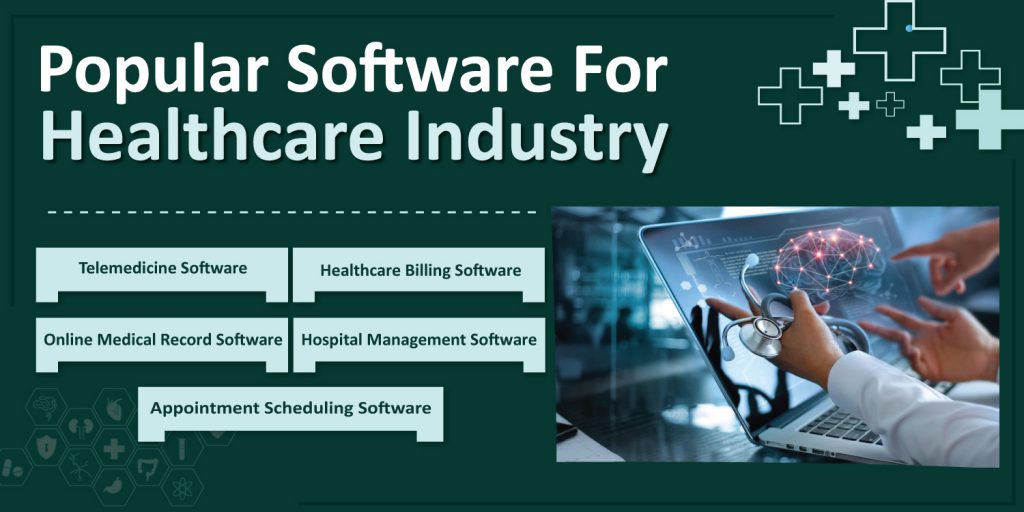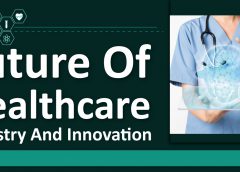It’s amazing how far the healthcare industry has come in the previous century, and one has to wonder where this rapid technological advancement will lead us. Some of what we presently think of as science fiction will become future medical technology, perhaps even in our lifetimes.
Technology drives the healthcare industry more than any other force, and it will continue to advance in significant ways in the future.
New drug breakthroughs, diagnostic methods, and drug delivery systems all provide hope for improved patient care, treatment, and satisfaction. In addition, IT innovations that connect the various aspects of healthcare ecosystems can boost efficiency while cutting costs.
In this blog, we shed light on some of the major technologies and innovations that will shape the future of the healthcare industry.
The Health Ecosystem
The entire health care system has multiple stakeholders. Providers (hospitals, doctors, therapists, and others), payers (health insurance), suppliers (pharmaceutical and Medtech companies, pharmacies, and others), and regulators make up the complete healthcare ecosystem.
Today, technology and innovation are helping us build a digital healthcare ecosystem. It is an infrastructure that supports the transformation of the organization-centered healthcare model into a patient-centered model. Seamless multidisciplinary collaboration is the primary goal of a digital healthcare ecosystem.
At the heart of this new wave of transformation is software. Medical software is critical to the healthcare industry. Software aids across all key facets of a healthcare organization, delivery, care, and research. Moreover, the software makes it possible for providers to seamlessly store and retrieve patient medical history. The market value of healthcare software is projected to reach around $29.9 billion by 2023, with a CAGR of 7.4% from 2018 to 2023
Popular Software for Healthcare Industry

1. Hospital Management Software
Hospital administration software aids in the administration of multiple administrative tasks such as doctor management, patient management, bed management, and so on, as well as the management of a hospital’s overall activities. lt also helps manage the information related to health care and aids in the job completion of health care providers effectively. As a result, the software significantly reduces everyday workloads while still providing a well-organized administrative framework.
Features of Hospital Management Software
â— Provides effective financial management for better decision-making.
â— Streamlines OPD & IPD system for ease of work
â— Patient appointment system
â— Customized medical billing and prescription system
â— Human resource management system, and more.
2. Healthcare Billing Software
Billing software is among the most significant pieces of software in the healthcare business. It’s also regarded as the doctor’s lifeline. It has a great reporting mechanism for controlling cash flow and payment efficiency. Providers have complete control over the invoicing process and can assure safe transactions. As a result, all transactions, especially patient invoices, can be easily tracked.
Features of Healthcare Billing Software
â— Provides appointment management system
â— Allows medical claim management
â— Credit card payment system
â— Generate an accurate report
â— Provides patient information, and so on.
3. Online Medical Record Software
Providers may keep a record of all important information with online medical record software. It can store patient information, medical charts, clinical data, and other information. Furthermore, the EHR software enables the operator to quickly access the centralized database and retrieve whatever data they require.
Features of Online Medical Record Software
â— Integrate with AI-based tools
â— Effective IT management system
â— Task management system
â— Provides smart analytics tools
â— Integrated with a centralized database, and more
4. Appointment Scheduling Software
The most important aspect of any healthcare business is managing the appointment system, which you may do with the help of appointment scheduling software. The operator can take online appointments and maintain track of them using the appointment scheduling software. As a result, it can reduce the time for both patients and operators, as well as provide a more user-friendly system.
Features of Appointment Scheduling Software
â— Auto reminder
â— SMS and email alerts
â— Appointment scheduling
â— Calendar management
â— Doctor management, and more.
5. Telemedicine Software
Telehealth software, which allows patients to consult with doctors through the internet, is another important category of healthcare software. There is no need for face-to-face consultation as doctors can prescribe medication after observing the patient via video conference. As a result, patients who are unable to get great healthcare due to distance, emergency, or other factors can leverage telehealth solutions.
Features of Telemedicine Software
â— Patient’s Dashboard
â— Remote Scheduling and Appointments
â— Patient History Management and Analysis
â— e-Prescription
â— Build-in chatbot system
â— Audio and Video-enabled Conferencing
â— Multiple payment gateway support, and so on.
Healthcare Industry Trends 2022
Let’s now move away from software and discuss the trends that are enabling healthcare ecosystems to become more accessible, scalable, and equitable. Here’s a look at some of the
Top Healthcare Industry Trends:
â— Telemedicine for Remote Healthcare: In 2022, it is expected that methods developed during the pandemic to deal with patients securely and remotely will be expanded into other areas of healthcare. Smart technology (machine learning) will alert specialists when sensors indicate the need for intervention or cameras detect that an elderly person has fallen in their home.
â— AR in Healthcare: In 2022, the number of AR applications in healthcare will continue to rise. AR can assist doctors in getting the most up-to-date and relevant information on their patients.
With its ability to construct 3D simulations, virtual reality can be extremely valuable for both medical professionals and students. It proposes a novel method for medical treatment and teaching. AR aids in surgical planning and patient treatment, as well as assisting patients and their families in understanding difficult medical conditions.
â— AI and Ml in Healthcare: AI and ML can have a game-changing impact on the future of the healthcare industry. Health-care systems create enormous volumes of data, to the point that making sense of it all to improve patient health is a challenge few could have foreseen a generation ago.
Artificial intelligence (AI) and machine learning have the power to process all of this data and create insights that lead to better medical care.
AI is revolutionizing the healthcare industry in a variety of ways. Artificial intelligence examines massive amounts of data using algorithms to understand how to execute jobs without being explicitly programmed. This capability is driving waves of change as AI in healthcare proves to be a critical component in diagnosis, treatment, care delivery, results, and cost.
â— 3D Printing in Healthcare: 3D printing is a relatively new manufacturing process with numerous applications in the medical field. Additive manufacturing, also known as 3D printing, allows for the creation of products that would otherwise be impossible to create in a traditional setting.
3D printing is utilized to manufacture exact replicas of a particular patient’s bones, organs, and blood arteries. 3DP is also used to create cutting-edge surgical tools, drill guides, and prosthetics. The use of 3D printing in healthcare has resulted in products that are lighter, stronger, and safer. Even the costs are reduced in comparison.
â— Genomics in Healthcare: Medicines and therapies have been developed on a “one-size-fits-all” basis. Until now the focus of the healthcare industry has been on optimizing pharmaceuticals for efficacy with the largest number of patients while reducing unpleasant side effects. This trend is however changing, albeit slowly, with the emergence of new medical technology such as genomics.
Using Genomics, bioinformatics specialists examine vast volumes of DNA-sequence data using high-performance computing and AI approaches to uncover variations that affect health, sickness, or treatment response. The insights enable experts to make personalized predictions about illness risk, which can aid in the selection of a patient-specific prevention strategy.
â— Chatbots: In addition to these exciting developments, another promising innovation in healthcare is the use of chatbots. Chatbots are virtual assistants that can communicate with patients and provide them with information and support. These digital helpers have a range of benefits, from reducing administrative tasks for medical professionals to improving patient satisfaction and engagement. To learn more about the advantages of chatbots in healthcare, check out this article on the benefits of chatbots.
Innovation in Healthcare Industry: The Bottomline
Innovations in healthcare technology refer to technological advancements that aid in the diagnosis, monitoring, and treatment of medical diseases. Cloud-based technologies, AI, collaboration, 3D printing, and virtual reality are just a few of the technologies driving medical innovations forward.
However, there is still a lot to do if we want to democratize healthcare. The future of healthcare has to be affordable as well. Especially in developing and underdeveloped economies. Half of the world lacks access to basic health services, and 100 million people are still living in extreme poverty due to medical costs.
So the challenge for healthcare stakeholders and innovators is to make breakthroughs that are affordable. The innovations won’t accomplish their true goals if they are not accessible by the people who need them the most.

Leave a Reply
You must be logged in to post a comment.